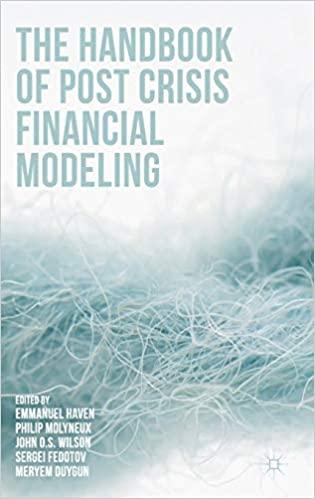Question
3. Which of the following statements is not true about retirement savings? a. No tax is paid now on money paid into sheltered savings plans.
3. Which of the following statements is not true about retirement savings?
a. No tax is paid now on money paid into sheltered savings plans.
b. Funds in sheltered savings plans grow before tax.
c. No tax is ever paid on money paid into sheltered savings plans.
d. Unsheltered savings are bought with after-tax dollars.
4. Marie is deciding if she should retire now at age 61 or wait until age 70. Her health is very good she expects to live to 90. Which of the following statements is true about her CPP retirement income if she expects to live to age 90 and will be eligible to collect the full retirement benefit at age 65 and is using a discount rate of 3%?
a. She should retire now.
b. She should wait until age 70.
c. It doesnt make any difference.
d. This cannot be assessed without knowing the amount of the full retirement benefit.
5. Which of the following statements about the steady-state financing rate is not true?
a. It means CPP rates will not go above 4.95%.
b. Up to half of the CPP fund is being actively managed.
c. It has been an unfunded pension plan.
d. In a few years, the CPP fund will be fully funded like other pension plans.
9. Which of the following statements about RPP is not true?
a. Most DCPP are in the private sector.
b. There are many DBPP in the private sector.
c. Employers who provide DBPP may have to make large contributions to ensure the plan is fully funded due to a drop in the stock market.
d. The limit on benefits received is the same for DCPP and DBPP.
10. Which of the following statement(s) are correct?
a. Defined benefit plans can generate surpluses.
b. Defined contribution plans cannot generate surpluses.
c. Deferred profit sharing plans are a type of defined contribution plan.
d. All of the above are true.
12. Henrys company provides him with a defined contribution pension plan. The maximum amount of pension he can receive for each year of service is:
a. 2% p.a. times his YMPE
b. 2% p.a. times his pensionable earnings
c. $1,722.22
d. There is no maximum
Step by Step Solution
There are 3 Steps involved in it
Step: 1

Get Instant Access to Expert-Tailored Solutions
See step-by-step solutions with expert insights and AI powered tools for academic success
Step: 2

Step: 3

Ace Your Homework with AI
Get the answers you need in no time with our AI-driven, step-by-step assistance
Get Started


